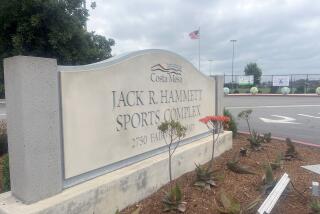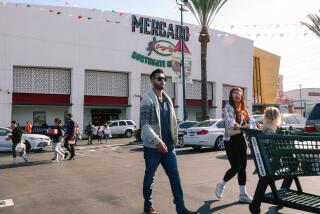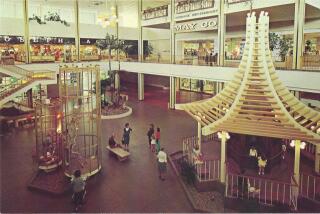Nate Reade; Key Figure in Costa Mesa Incorporation
- Share via
Nate Reade, a leader in Costa Mesa’s drive for cityhood when South Coast Plaza was nothing but bean fields, died late Monday, his family said. He was 78 and had suffered heart problems.
A graveside service is planned for Friday, but arrangements were not finalized Tuesday, said his wife, Thelma Reade. A memorial will take place early next month at St. Andrew’s Presbyterian Church in Newport Beach, she said.
Longtime acquaintances of Reade spoke fondly Tuesday of the “teddy bear of a man,” a former auto-parts shopkeeper from Boise, Idaho, who held posts at pivotal times in Costa Mesa’s transformation from a rural outpost to the hub of a county. Sometimes referred to as the South Coast Metro area, Costa Mesa is now home to the county’s major arts venues and a shopping center boasting Chanel and Armani boutiques.
Reade was born in Boise on June 9, 1922. His family relocated to Orange County, where he graduated from high school in Laguna Beach. He studied music at USC before enlisting in the Army at 17 by lying about his age, his widow said. High blood pressure led to his early discharge, but when World War II broke out, he served as a cook. He and Thelma were married in 1944.
Back in Orange County, Reade served for years on the boards of water and sewer districts. He was a planning commissioner and head of the Chamber of Commerce as Costa Mesa beat out Santa Ana to annex the land destined to become South Coast Plaza.
“Mr. Reade played a far larger role after the city’s incorporation,” said Hank Panian, a professor of history at Orange Coast College in Costa Mesa from 1956 to 1990. “He was on the Planning Commission for a number of years, and in that role he oversaw a great deal of the huge spurt of Costa Mesa’s growth from the late ‘60s through the early ‘80s.”
Knowing a bit of Costa Mesa history helps to clarify Reade’s place in it, said Bob Wilson, three-time mayor of the city and author of “From Goat Hill to the City of the Arts: The History of Costa Mesa,” published this year by Seven Locks.
Costa Mesa was largely agricultural, a way station for beans and other truck crops, Wilson said. Rich neighbor Newport Beach was constantly “hacking away” at its edges, he said, by annexing land.
To control unsightly oil drilling and keep Newport Beach and Santa Ana at bay, a group of small-business owners launched the incorporation drive, Wilson said.
Reade, by then a trusted and influential member of the Chamber of Commerce, persuaded the leadership to kick in half of the incorporation cost: $750. That attracted another $750 in small donations and the critical popular support that swayed the Board of Supervisors, Wilson said. The board approved Costa Mesa’s incorporation in 1953.
As time went on, Panian said, Reade was on the water district board when the city switched to well water, giving it self-sufficiency.
He had long run an auto-parts shop, then two gas stations in town, but he sold them to become the full-time director of the Chamber of Commerce as the city began to grow dramatically, Panian said.
Reade retired from the Chamber of Commerce and other civic posts by the mid-1980s but remained active in the community, Panian said.
He is survived by his wife, four children, three grandchildren and a sister. In lieu of flowers, donations may be made to the Braille Institute.
More to Read
Sign up for Essential California
The most important California stories and recommendations in your inbox every morning.
You may occasionally receive promotional content from the Los Angeles Times.










